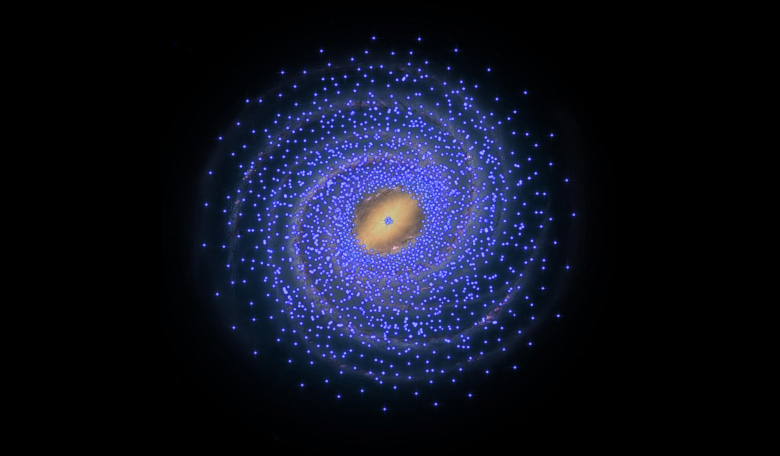Scientists studying the centre of our Galaxy have found a huge void deficient in stars, prompting researchers to suggest that a major revision is required in our understanding of the Milky Way.
The void, detected by Prof Noriyuki Matsunaga of the University of Tokyo, along with team members from Japan, South Africa and Italy, is a huge region stretching for thousands of light years from the core of the Galaxy and was found to contain no Cepheids, a type of young star between 10 and 300 million years old (compared with our Sun that is 4.6 billion years old.)
Cepheids are variable stars and they undergo regular cycles of pulsation that causes their brightness to change in a very regular/periodic way. Because Cepheids are intrinsically bright and their pulsations are so regular, astronomers use these type of stars to calculate the distance to very distant galaxies.
Work undertaken in this new study however, uses these same techniques to reveal the structure of our own Milky Way instead. Nevertheless, finding Cepheids within the inner realm of our own galaxy is notoriously difficult, as interstellar dust blocks out a lot of the visible light, thus hiding stars from view. This problem can be overcome by looking at light in different wavelengths and infrared radiation is often used in the study of newly formed stars, as its longer wavelength can pass through dusty regions of space without being excessively scattered.
Accordingly, in order to take a closer look at the goings-on in the centre of the Galaxy, Matsunaga and team used the Infrared Survey Facility (IRSF) 1.4-m telescope and the SIRIUS IR camera located at Sutherland, South Africa, to make their observations.
To their surprise however, their analysis showed a distinct lack of any Cepheids in the inner 2.5 kiloparsec region of the Galactic disc. "We already found some while ago that there are Cepheids in the central heart of our Milky Way (in a region about 150 light years in radius). Now we find that outside this there is a huge Cepheid desert extending out to 8000 light years from the centre,” explains Matsunaga.
Previous results on cepheid distribution within this region are conflicting. Some astronomers suggest that dozens of cepheids can be detected within the inner region of the Galaxy, however recent radio observations show that no new stars are being born - an analysis that is supported by the work of Matsunaga and team.
"The current results indicate that there has been no significant star formation in this large region over hundreds of millions years. The movement and the chemical composition of the new Cepheids are helping us to better understand the formation and evolution of the Milky Way,” explains co-author Giuseppe Bono.
As the structure of the inner Galaxy still remains to be revealed, Matsunaga and team conclude ‘that detailed observations of these objects, such as high-resolution spectroscopy for radial velocities and metallicities, would provide a new path to a global picture of Galactic structure and evolution.’











